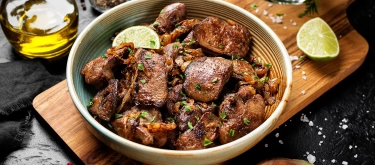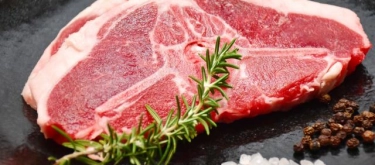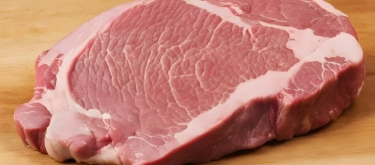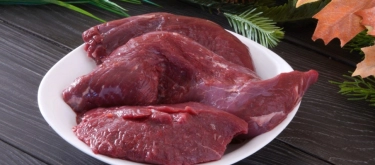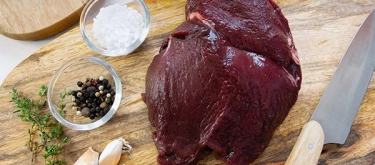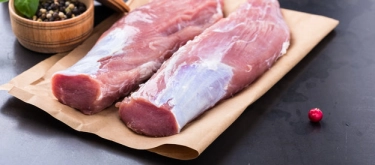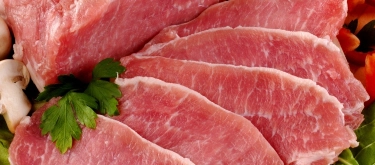Beef Tongue: Taste Profile, Aroma, Benefits and Health Risks
Beef tongue is a delicacy prized for its uniquely tender texture and sophisticated flavor. Revered in both traditional and modern culinary circles, this offal product offers a refined taste experience that adapts well to a variety of recipes. This article provides an in-depth sensory description of beef tongue—including its taste, aroma, texture, and appearance—followed by a detailed flavor analysis, culinary applications, selection and storage guidelines, nutritional insights, and key dietary considerations.
Beef tongue is an animal-derived offal product and is not suitable for vegans or vegetarians. It is naturally gluten- and lactose-free. However, due to its cholesterol and purine content, it should be consumed in moderation, especially by individuals with high cholesterol or gout concerns.
What does Beef Tongue taste like?
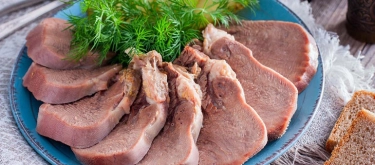
Complete Sensory Description
Taste:
Beef tongue boasts a mild, slightly sweet flavor accented by delicate umami notes. When properly prepared, it reveals a tender, almost buttery taste that transitions from an initial subtle sweetness to a rich, savory finish. This balanced flavor profile makes it an excellent canvas for a range of sauces and seasonings.
Aroma:
The aroma is gentle and inviting, with hints of roasted meat and natural spices. As it cooks, beef tongue fills the kitchen with a warm, comforting fragrance that entices the palate and evokes a sense of traditional home cooking.
Texture:
One of the most remarkable features of beef tongue is its silky, almost custard-like texture. Long cooking methods—such as boiling or braising—yield an exceptionally tender product that still retains a slight firmness, offering a delightful, melt-in-your-mouth experience.
Appearance:
When cooked, beef tongue acquires an appetizing golden-brown hue with a light caramelization on its surface. When thinly sliced, it presents an elegant, refined look that enhances its appeal in both classic and contemporary presentations.
In-Depth Flavor Analysis
-
Gentle Sweetness:
The initial taste of beef tongue is characterized by a delicate natural sweetness that lays the foundation for its overall mild flavor. -
Umami and Meaty Notes:
During cooking, natural proteins are released, creating a pronounced umami effect that imparts a deep, savory quality to the meat. -
Light Spicy Accents:
The use of herbs and spices—such as bay leaves, thyme, and black pepper—during preparation enhances the meat’s natural flavor, adding a refined aromatic complexity. -
Balanced Texture Contribution:
The prolonged cooking process not only tenderizes the meat but also creates a pleasing balance between its soft, buttery consistency and a subtle, satisfying chew.
Culinary Applications
-
Cold Appetizers and Salads:
Thinly sliced, boiled beef tongue is a perfect addition to cold platters and salads. It pairs wonderfully with mustard or horseradish sauces, providing a delicate yet flavorful accent. -
Hot Dishes:
Beef tongue excels in braised or roasted dishes. It can serve as the star of a hearty stew, be incorporated into pasta dishes, or featured in traditional recipes where its tender texture enhances the overall dish. -
Sandwiches and Canapés:
Lightly seared slices of beef tongue make an elegant filling for gourmet sandwiches or canapés, offering a unique twist to familiar recipes. -
Fusion Cuisine:
In modern culinary experiments, beef tongue can be paired with fruit-based sauces or unexpected spice blends to create innovative fusion dishes that surprise and delight the palate.
Selection and Storage
Selecting Beef Tongue:
- Choose tongues from reputable suppliers who guarantee freshness and proper processing.
- Look for a uniform color and absence of any off odors, indicators of high-quality handling.
Storage Recommendations:
- Store beef tongue in the refrigerator at temperatures between +2°C and +4°C (36°F–39°F) and use within 2–3 days of purchase.
- For longer storage, wrap in airtight packaging and freeze in portion sizes.
- Thaw slowly in the refrigerator to help preserve its delicate texture and flavor.

Quick Facts
- Tender and Refined:
Long, slow cooking transforms beef tongue into an exceptionally tender delicacy with a subtle, refined taste. - Nutrient-Dense:
It is a rich source of high-quality protein, B vitamins, iron, and other essential nutrients. - Culinary Versatility:
Beef tongue adapts well to both traditional recipes and modern culinary creations. - Naturally Gluten- and Lactose-Free:
Suitable for many dietary needs (except for vegetarians and vegans).
Benefits of Beef Tongue
- High Protein Content:
An excellent source of protein, aiding in tissue repair and muscle growth. - Essential Vitamins:
Rich in B vitamins essential for metabolism and proper nerve function. - Mineral Rich:
Provides significant amounts of iron, zinc, and other trace elements that support overall health. - Low in Fat:
Its lean nature makes it a smart choice for calorie-conscious diets without compromising on flavor.
Additional Nutritional Insights
- Core Composition:
Comprised primarily of high-quality protein with minimal fat, along with a range of vitamins and minerals. - Caloric Profile:
Low in calories, making it an ideal ingredient for balanced, nutrient-dense meals. - Microelement-Rich:
Its content of iron and B vitamins supports energy metabolism and blood health. - Natural Preparation:
Traditional cooking methods help preserve the natural taste and nutritional integrity without excessive additives.
How to Enjoy Beef Tongue
- As a Main Dish:
Serve boiled or braised beef tongue, thinly sliced and accompanied by a light sauce such as mustard or horseradish. - In Appetizers:
Use as a sophisticated addition to sandwiches, canapés, or cold salads where its tender texture enhances the dish. - In Hot Preparations:
Incorporate into stews, ragouts, or braised dishes with vegetables and aromatic herbs. - In Fusion Recipes:
Experiment with pairing beef tongue with fruit-based or tangy sauces to create innovative culinary presentations.
Harm and Dietary Considerations
- Animal-Derived Product:
Beef tongue is not suitable for vegetarians or vegans. - Cholesterol Consideration:
Due to its moderate cholesterol content, it should be consumed in moderation, particularly by those with heart conditions. - Cooking Precision:
Proper cooking techniques are essential to ensure both safety and the preservation of its nutritional benefits. - Individual Tolerance:
Although naturally gluten- and lactose-free, some individuals may have unique dietary sensitivities; therefore, moderation is advised.
Conclusion
Beef tongue is a refined delicacy known for its tender texture and complex, nuanced flavor. When properly sourced, prepared, and stored, it becomes a versatile ingredient that enhances both traditional and modern dishes. With its rich nutritional profile and sophisticated taste, beef tongue is a valuable choice for gourmets eager to explore new culinary horizons—provided it is enjoyed in moderation.
References
- McGee, H. (2004). On Food and Cooking: The Science and Lore of the Kitchen. New York: Scribner.
- Taub, R. (2009). "Cultural Delicacies: Rediscovering Traditional Offal." Gastronomy Journal, 17(2), 45–53.
- Ivanov, A. P. (2018). Delicacies of Beef: Traditional Recipes and Modern Techniques. Moscow: Culinary Publishing House.

